Art of the Perfect Prompt
14 Crucial Learnings for Constructing Effective LLM Prompts
- Interactivity and Dialogue: An effective prompt encourages interactive dialogue between the user and the AI, asking open-ended questions and promoting user engagement. By prompting users with thought-provoking queries, this principle encourages collaborative exploration, nurturing critical thinking and creativity. This interactive model simulates human-like dialogues, evolving based on user input to create a fluid and engaging learning environment. It not only empowers users to shape their exploration but also establishes a symbiotic relationship between users and AI, enriching the learning experience and redefining the potential of AI-driven interactions.

- Structured, Step-by-Step Guidance: A well-designed prompt forms the backbone of a user-centric experience by providing a navigational roadmap through complex tasks. This meticulous design breaks down intricate processes into manageable segments, ensuring clarity and comprehension while mitigating overwhelming information. By presenting a sequential framework, users are empowered to grasp each step thoroughly, fostering a sense of accomplishment and confidence as they progress. This methodical approach not only streamlines comprehension but also cultivates an environment conducive to learning, enabling users to tackle complexities methodically and effectively.

- In-Depth Explanation and Context: Each step in an effective prompt serve as the bedrock for comprehensive user comprehension and mastery of intricate processes. Each step is meticulously articulated, enriched with detailed explanations, illustrative examples, and insightful hints, nurturing a deep understanding of the underlying mechanisms. By weaving context into each explanation, users not only grasp the "what" but also delve into the "why" and "how", fostering a holistic understanding that transcends mere surface-level information. These contextualized explanations not only demystify complexities but also empower users to navigate challenges autonomously, cultivating a sense of mastery and proficiency within the subject matter.
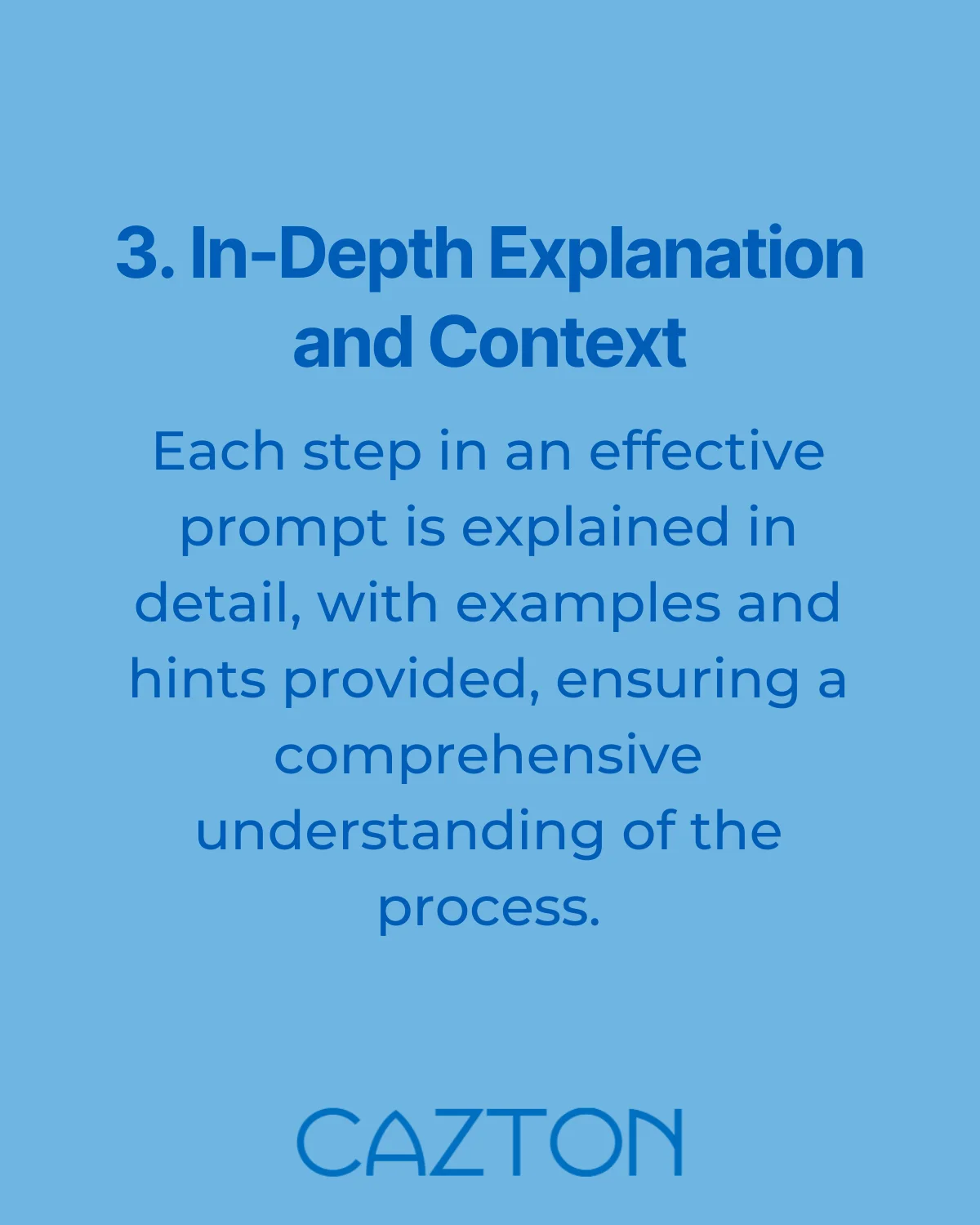
- Abstract Thinking and Connection: Effective prompts harness the innate capacity of AI to forge connections between abstract concepts, serving as a conduit for users to transcend siloed knowledge and embrace multidimensional problem-solving. By capitalizing on AI's ability to decipher complex interrelations, these prompts inspire users to think beyond the confines of singular disciplines, encouraging the exploration of diverse perspectives and methodologies. This approach not only nurtures abstract thinking but also cultivates a versatile problem-solving mindset adaptable across disparate domains. As users navigate these connections, they're equipped not just with solutions to immediate queries but with a framework to tackle future challenges innovatively, drawing insights from a mosaic of disciplines and paradigms. Thus, effective prompts become catalysts for nurturing holistic problem-solving strategies, empowering users to embrace complexity and ambiguity as stepping stones toward ingenious solutions.
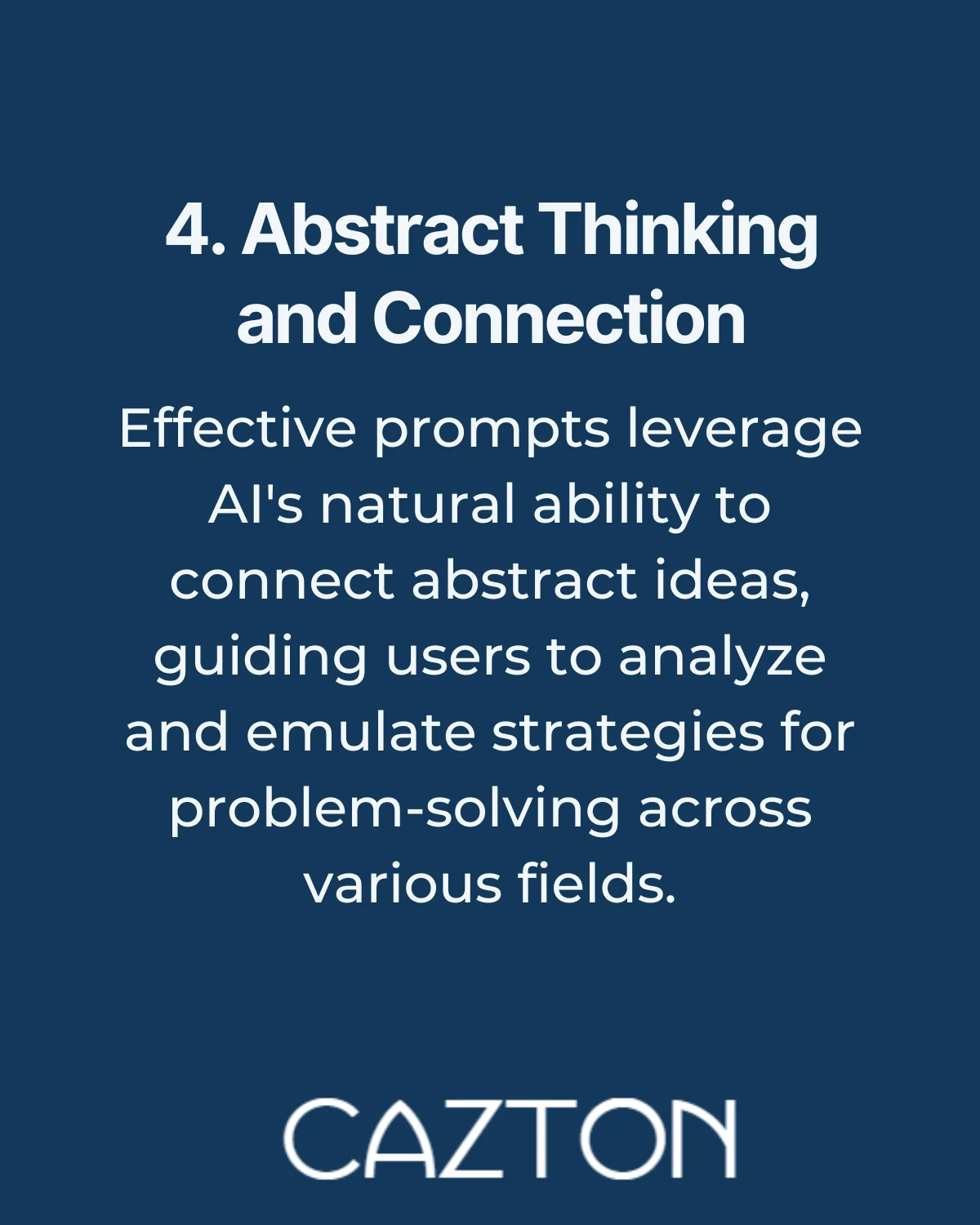
- Constructive Analysis and Feedback: Within AI prompts delineate a transformative learning experience by fostering a symbiotic relationship between users and AI. By directing the AI to evaluate user inputs critically, these prompts transcend mere solution provision, cultivating an environment where users actively engage in refining their work. This feedback loop emphasizes not just the end result but the process, encouraging iterative refinement and skill enhancement. By nudging users towards self-improvement rather than dependency, these prompts instill a sense of ownership and empowerment, catalyzing a learning journey marked by continuous growth and skill honing. Ultimately, this approach propels users beyond passive recipients of solutions, transforming them into proactive architects of their learning trajectories.
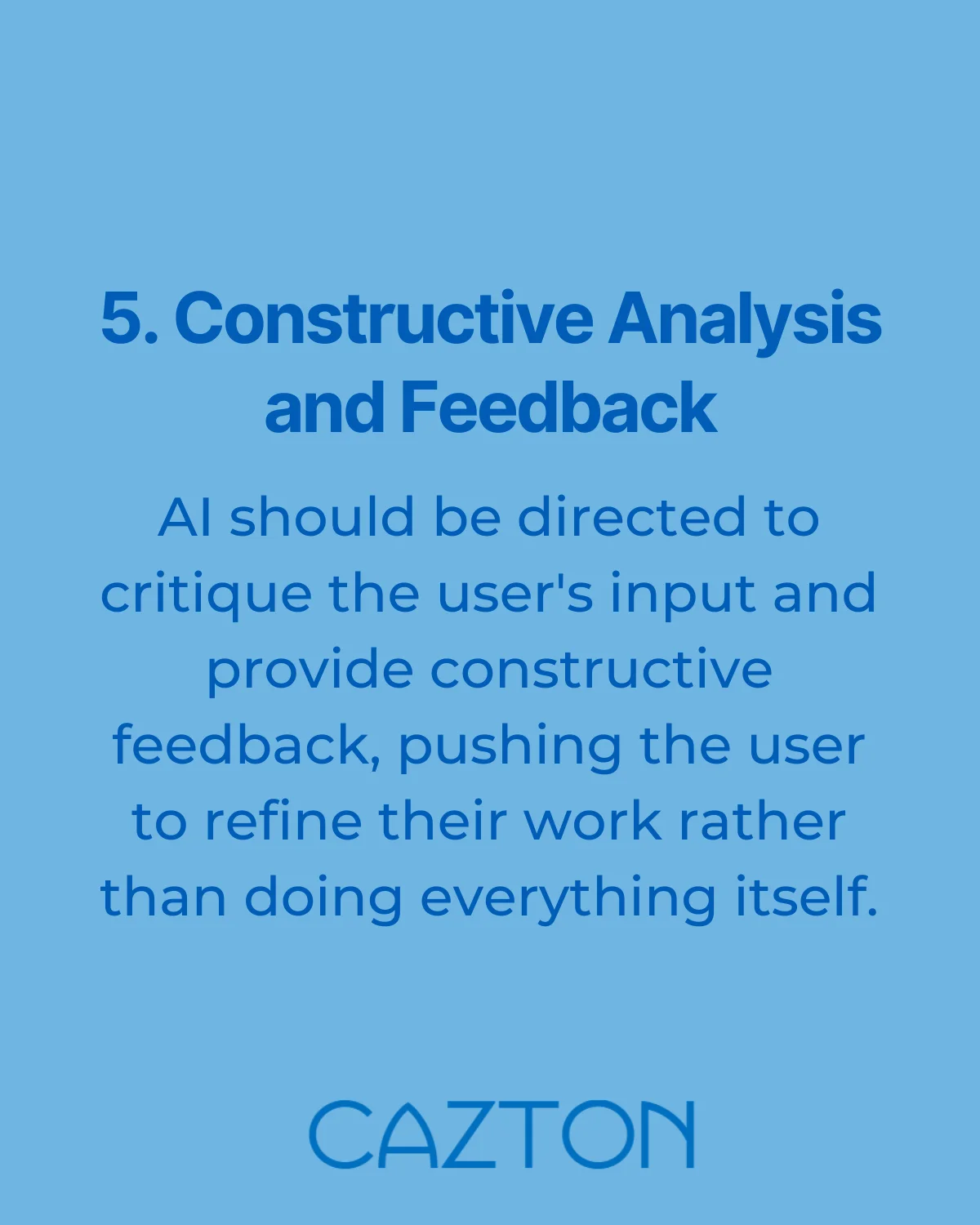
- Citing Peer-Reviewed Sources: Effective prompts pivot on the foundational principle of citing peer-reviewed sources within AI-generated content, elevating the reliability and credibility of information provided. By mandating the AI to source information from peer-reviewed literature, these prompts uphold a stringent standard of accuracy, mitigating the risk of disseminating erroneous or misleading data. This insistence on factual evidence not only bolsters the authenticity of the information but also instills in users the ethos of relying on substantiated evidence for informed decision-making. Emphasizing the credibility of sourced facts, these prompts foster a culture of critical inquiry, urging users to scrutinize and corroborate information, nurturing a discerning mindset essential in navigating an era inundated with information overflow. Ultimately, this practice of sourcing from peer-reviewed materials serves as a cornerstone in fortifying the veracity of AI-driven content, fostering a culture of evidence-based reasoning and informed decision-making.
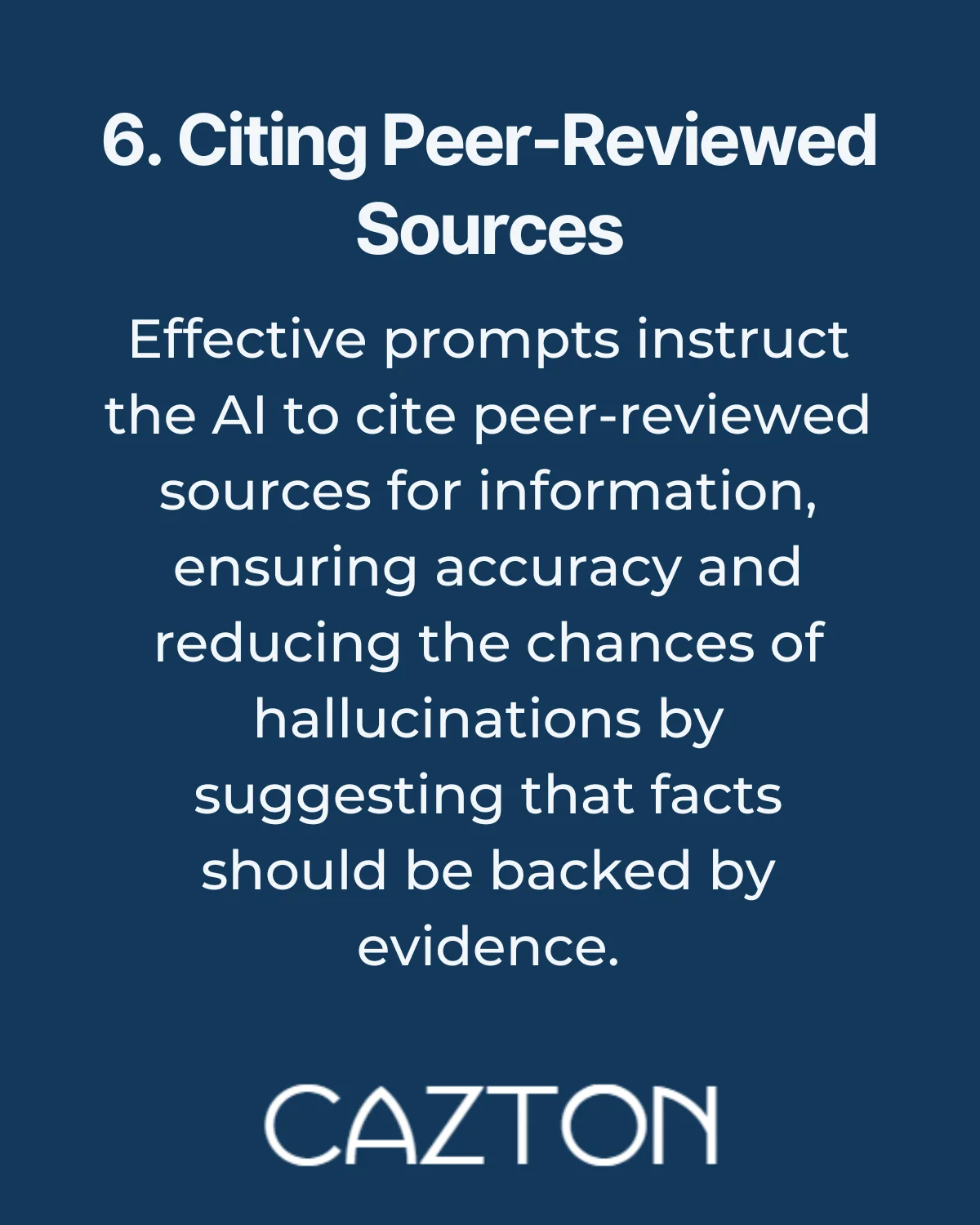
- Multidisciplinary Approach: A multidisciplinary approach within a prompt lays the groundwork for a robust and versatile learning experience by intertwining insights from diverse fields. By amalgamating concepts across disciplines, these prompts transcend narrow silos of knowledge, enabling the AI to draw from a rich tapestry of information. This amalgamation not only enriches the depth of understanding but also broadens the horizons of problem-solving, fostering innovative solutions that harness the synergy of disparate ideas. By embracing this interdisciplinary landscape, users are exposed to a mosaic of perspectives, nurturing adaptability and fostering a holistic understanding essential in navigating the complexities of real-world challenges. Thus, these prompts become gateways to a comprehensive understanding, leveraging the amalgamation of knowledge domains to nurture a dynamic and versatile learning environment.
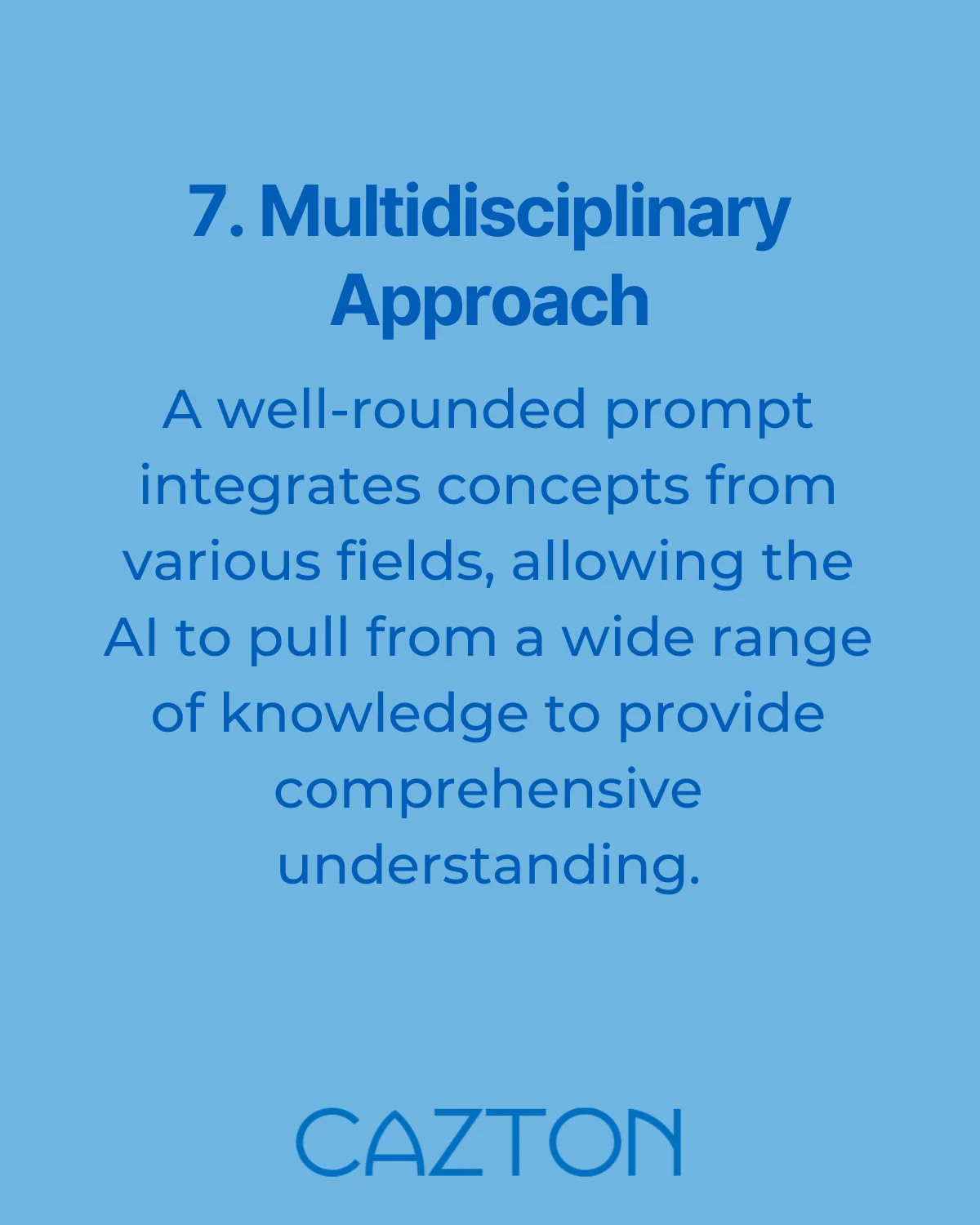
- Emphasis on Context, Systems View, and Unifying Patterns: Effective prompts place paramount importance on contextual awareness, adopting a holistic systems view and discerning unifying patterns to drive the creation of sustainable solutions. By emphasizing context, these prompts urge users to discern the intricate interplay between elements within a broader framework, fostering a comprehensive understanding of the problem's landscape. Encouraging a systems-oriented perspective, they prompt users to explore interconnected relationships, acknowledging the ripple effects of decisions across various domains. Furthermore, by spotlighting unifying patterns, these prompts empower users to identify recurring themes or trends that transcend individual instances, facilitating the creation of enduring and adaptable solutions. Thus, these prompts become catalysts for sustainable problem-solving, encouraging users to navigate complexity by considering interdependencies, contextual nuances, and overarching patterns, paving the way for solutions that resonate with long-term viability.
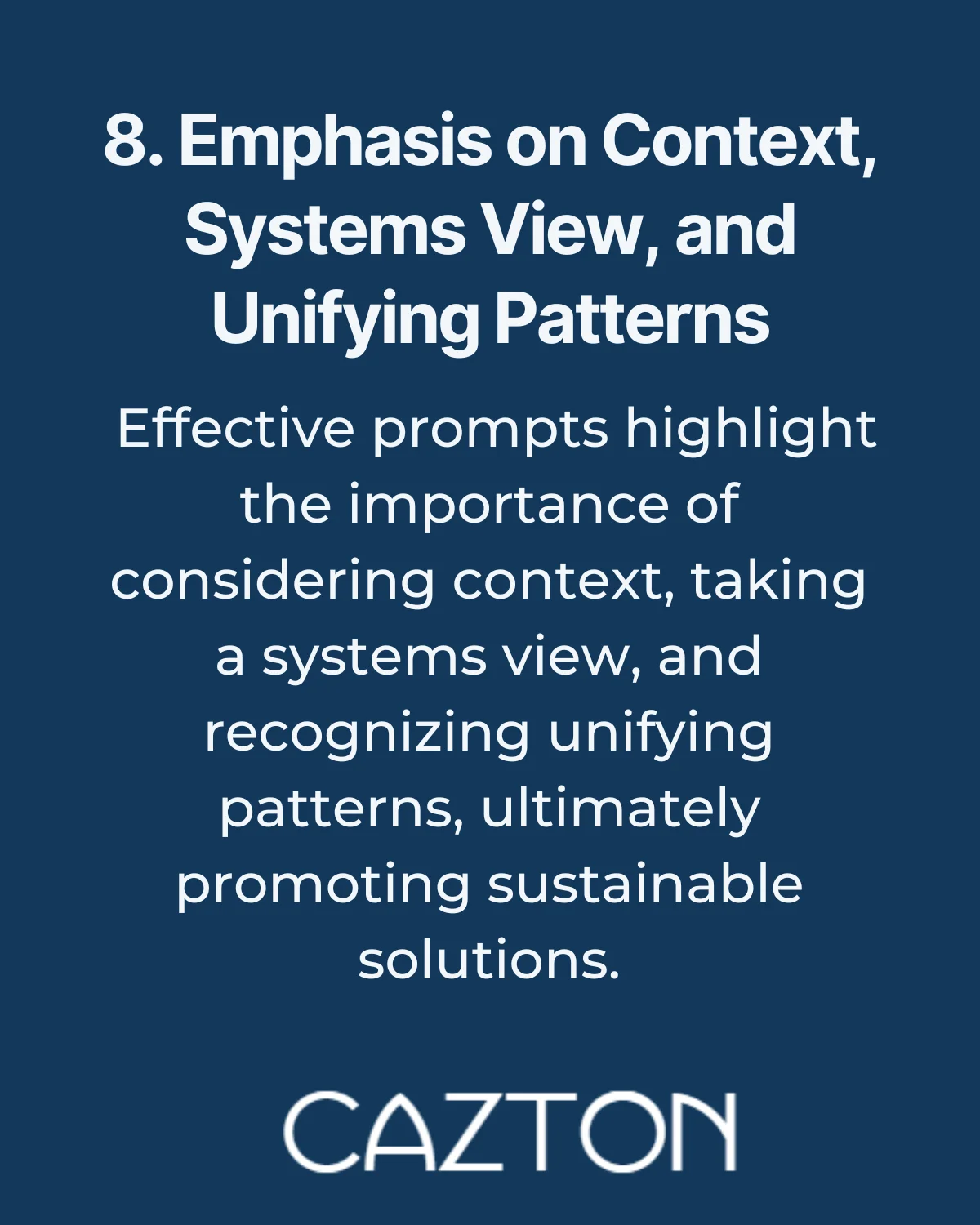
- Adaptability and Flexibility: Effective prompts stand as flexible tools adaptable to a spectrum of challenges and fields, embodying versatility that transcends singular contexts and enabling innovative problem-solving. Their inherent adaptability allows users to tailor these prompts to distinct scenarios, fostering an environment where solutions are not confined by rigid frameworks but rather sculpted to fit the specific contours of diverse challenges. By showcasing this versatility, these prompts empower users to transcend the boundaries of conventional problem-solving, encouraging the application of innovative strategies across domains. This adaptability not only underscores the fluidity of AI-driven interactions but also cultivates a culture of creative exploration, where the same prompt can yield a myriad of inventive solutions, amplifying the potential for innovation and breakthroughs in varied spheres. Thus, effective prompts serve as dynamic tools capable of traversing diverse landscapes, fueling the quest for novel solutions that address complex challenges across multifaceted domains.
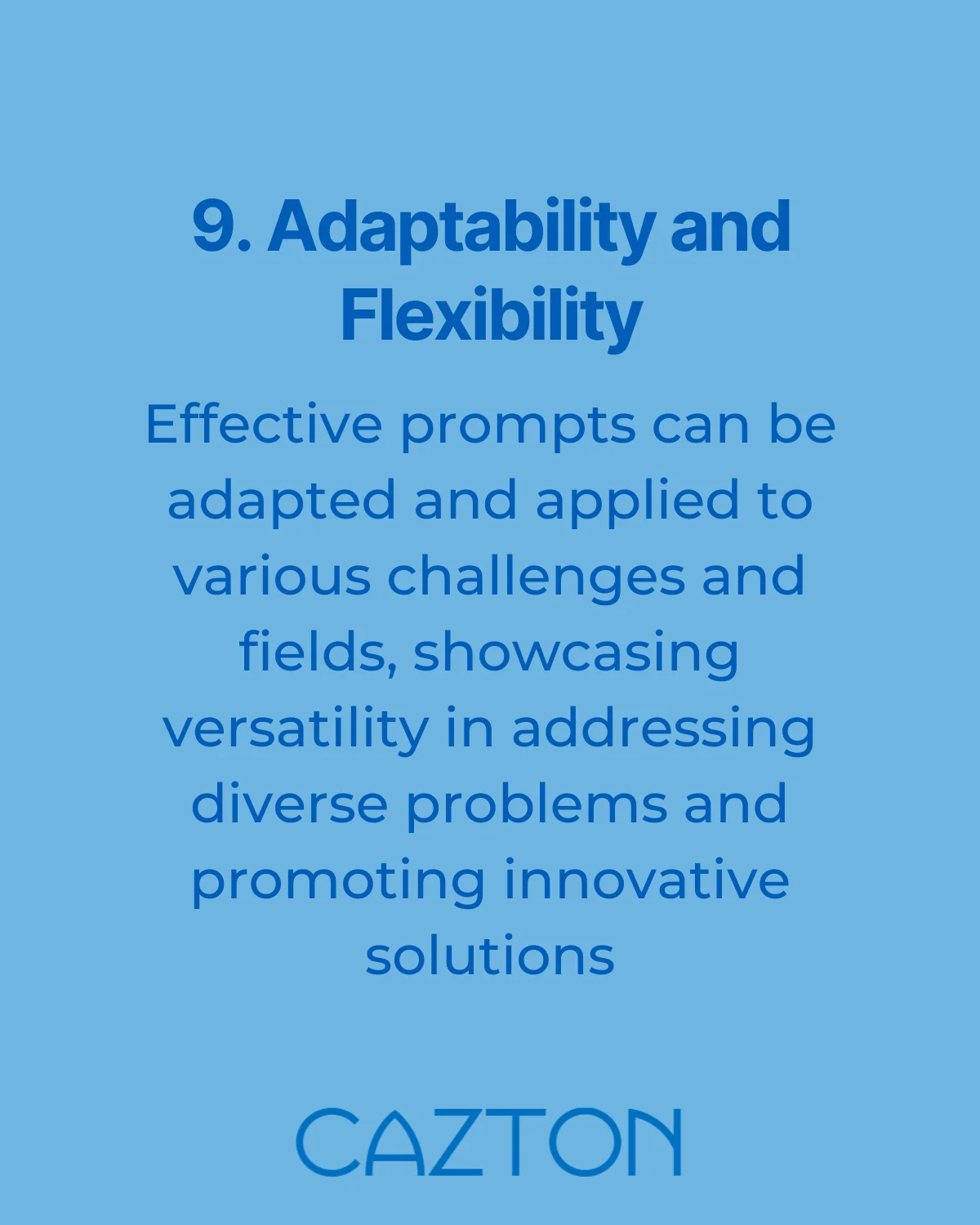
- Encouraging Collaboration: Design prompts thrive on fostering a collaborative ethos among users, recognizing that collective efforts breed a fertile ground for diverse perspectives and innovative solutions. By championing collaboration, these prompts transcend individual contributions, creating an environment where varied insights converge, intersect, and intertwine. Encouraging teamwork amplifies the pool of ideas, harnessing the collective wisdom and experiences of participants to tackle multifaceted challenges. This collaborative spirit not only enriches the ideation process but also nurtures a culture of inclusivity and collective ownership, where each contribution becomes a catalyst for the synthesis of more comprehensive and innovative solutions. Ultimately, these prompts evolve beyond mere facilitators of individual efforts, becoming conduits that channel collective creativity and diverse perspectives towards the attainment of solutions that resonate with depth and inclusivity.
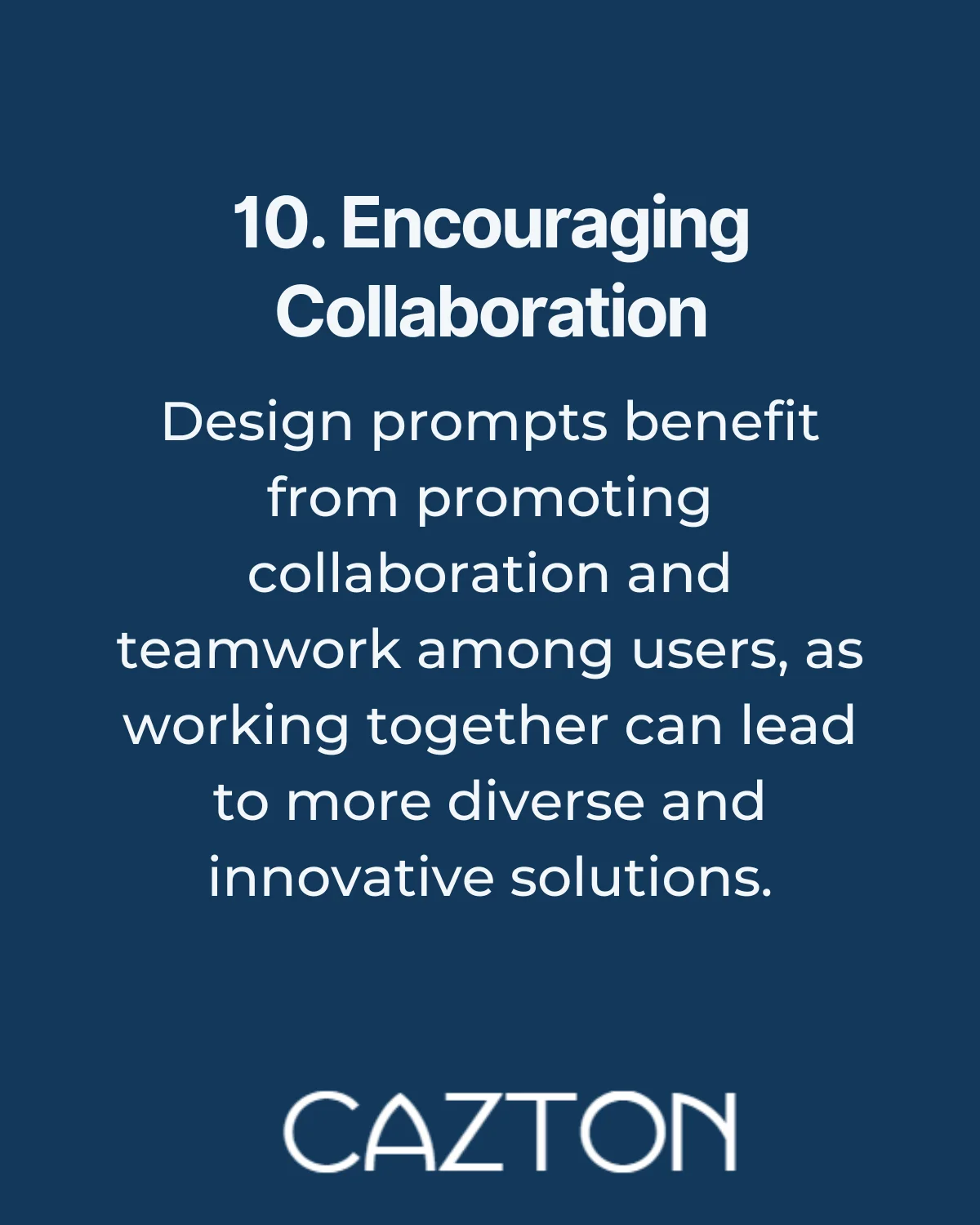
- Real-World Examples and Case Studies: Incorporating real-world examples and case studies within prompts serves as a beacon illuminating the practical application of methodologies, offering users tangible insights and inspiration for crafting more effective solutions. By intertwining theoretical concepts with real-life instances, these prompts bridge the gap between theory and practice, providing users with a contextual understanding of how methodologies translate into actionable strategies. These examples serve not only as illustrations but also as catalysts for innovation, inspiring users by showcasing successful implementations and fostering a mindset that seeks pragmatic and impactful solutions. By grounding theoretical frameworks in real-world scenarios, these prompts empower users to glean lessons from existing successes and failures, thereby honing their ability to develop astute, contextually relevant solutions that resonate with practicality and efficacy.
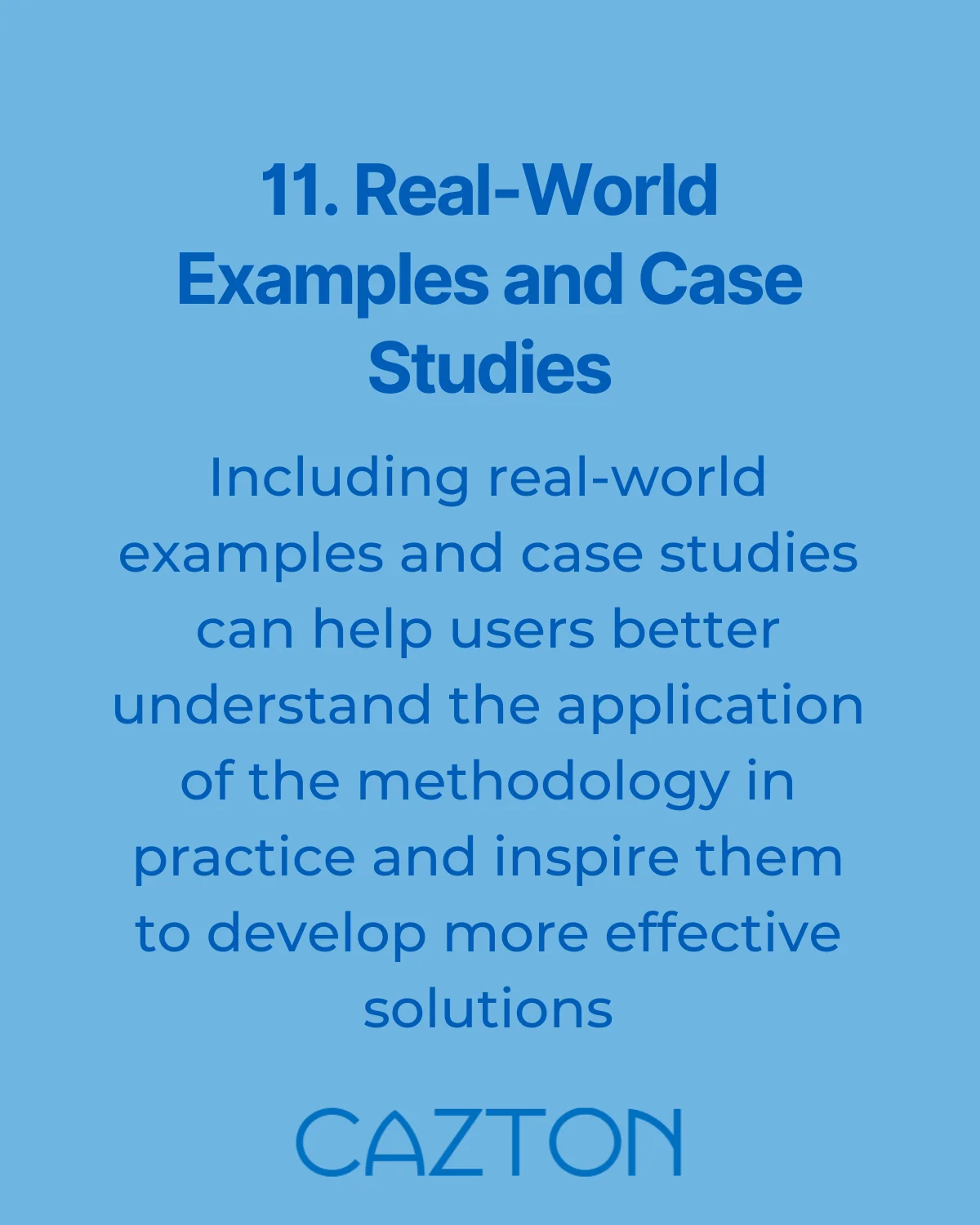
- Iterative Design Process: The iterative design process stands as a cornerstone within prompts, underscoring the significance of continuous refinement and evolution in crafting successful and comprehensive solutions. By highlighting the iterative approach, these prompts instill a mindset that views feedback as a catalyst for growth rather than a conclusion. Iteration becomes the vehicle through which solutions evolve, leveraging feedback loops to refine and fortify designs based on real-time insights and evolving requirements. Emphasizing this iterative cycle not only cultivates resilience in problem-solving but also fosters a culture that embraces adaptability and improvement. Ultimately, it's this iterative journey that steers users towards the creation of resilient, adaptable, and meticulously honed designs capable of navigating the complexities and uncertainties inherent in varied challenges.
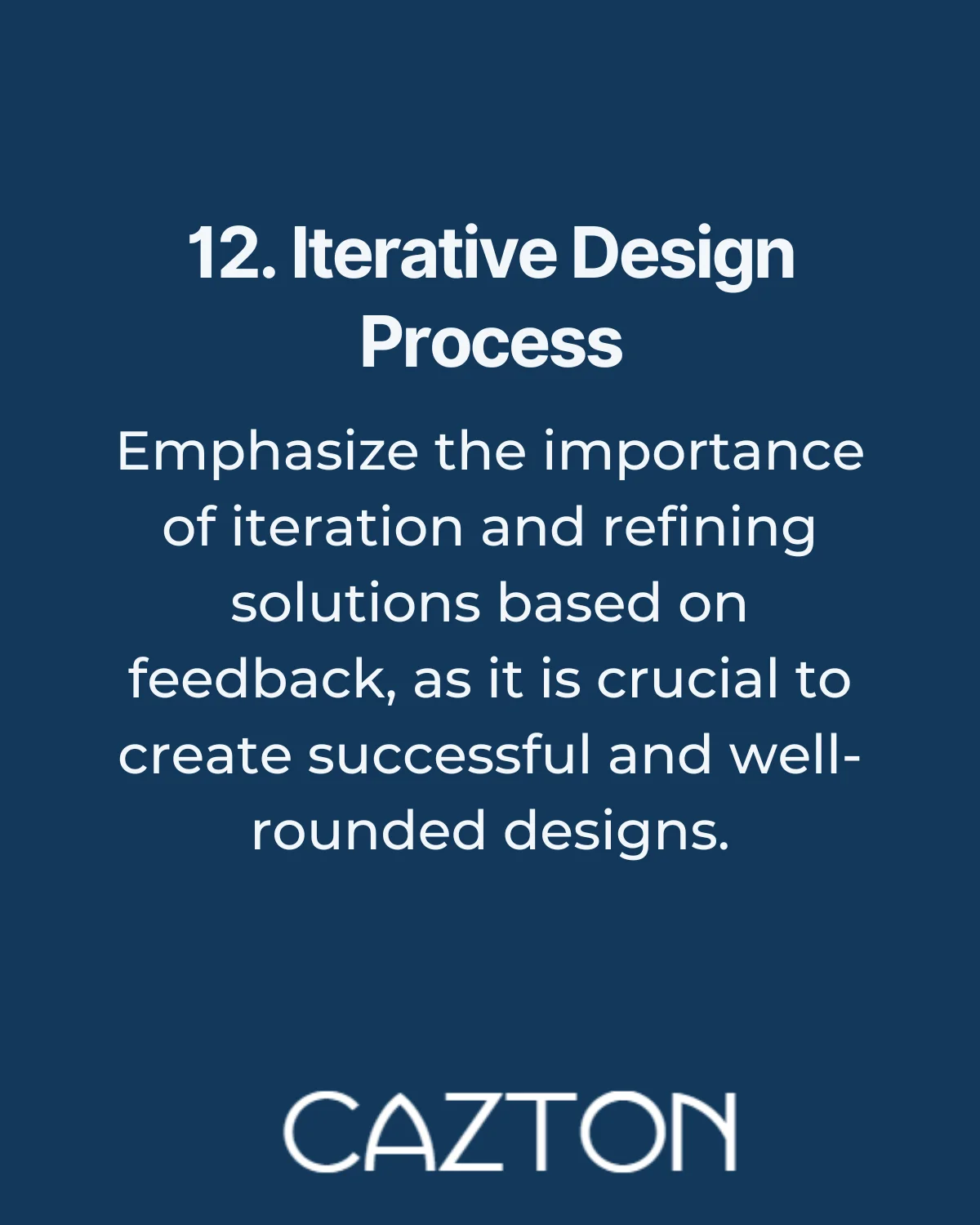
- Ethical Considerations: Prompts prioritize ethical considerations as an integral facet, urging users to ponder the broader societal and environmental impact of their designs beyond mere innovation. By foregrounding ethical contemplation, these prompts steer users towards a conscientious approach, fostering a mindset that places equal weight on responsibility and innovation. Encouraging users to deliberate on the ethical ramifications of their solutions ensures that innovation aligns with values that benefit society and the environment. This emphasis on ethical scrutiny not only guards against inadvertent repercussions but also cultivates a culture of responsible innovation, where solutions are crafted with a keen eye on ensuring positive contributions to society while mitigating potential harm. Ultimately, integrating ethical considerations within the design process via prompts becomes a catalyst for infusing empathy, responsibility, and sustainability into innovative solutions, thereby reinforcing the role of technology in fostering positive societal change.
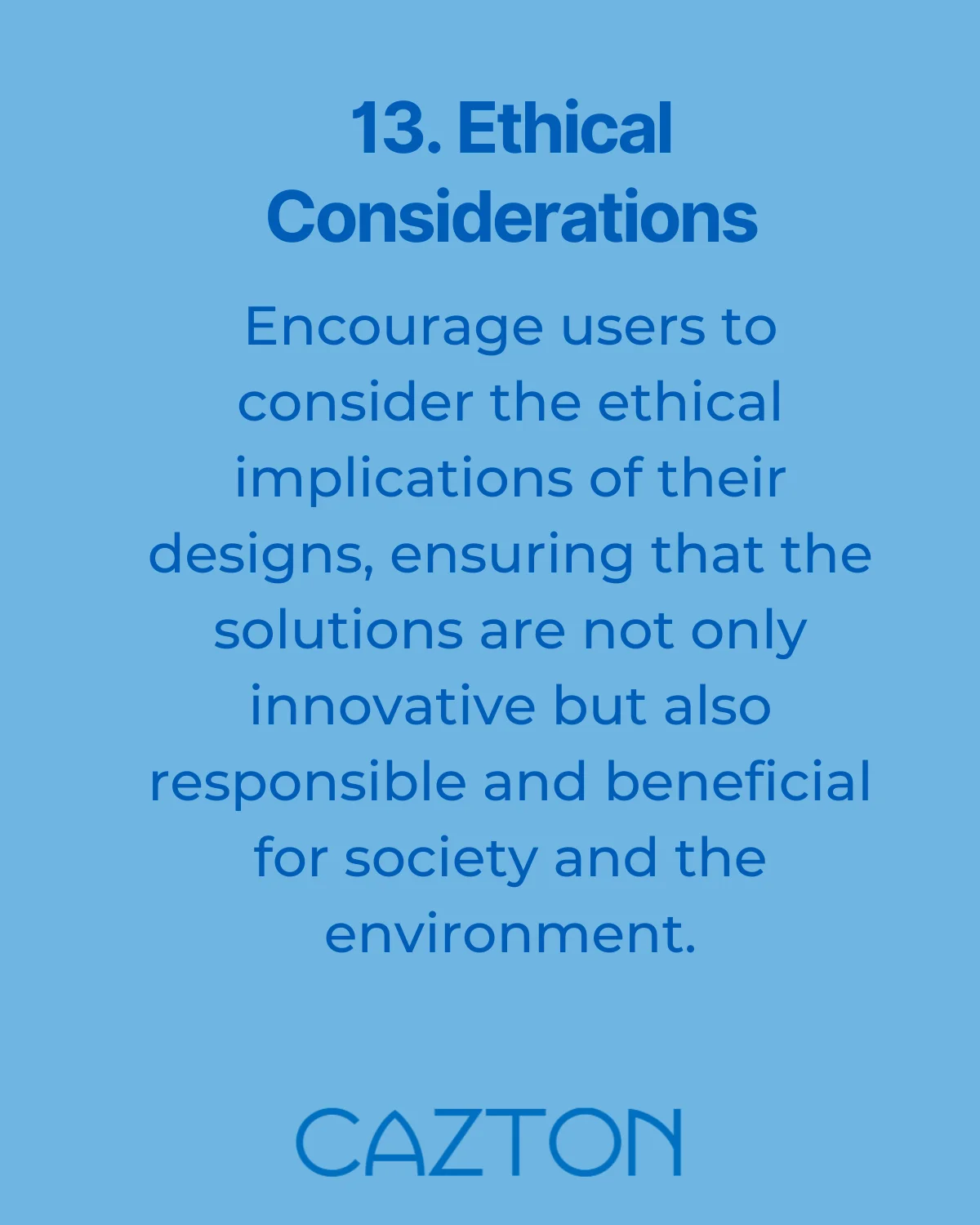
- Scalability and Transferability: Emphasizing scalability and transferability within prompts underscores the pivotal role of designing solutions that transcend immediate contexts, fostering adaptability and applicability across diverse scenarios. By spotlighting these aspects, prompts instill a mindset that views solutions not merely as singular fixes but as adaptable frameworks capable of seamless integration into varied contexts. This emphasis on scalability ensures that designs possess the elasticity to accommodate growth and evolving needs, while the focus on transferability encourages the creation of solutions with inherent flexibility, enabling their seamless application across different situations. Ultimately, by nurturing this approach, prompts pave the way for solutions that transcend limitations, empowering users to craft designs that evolve, scale, and seamlessly transition across varied environments and circumstances.
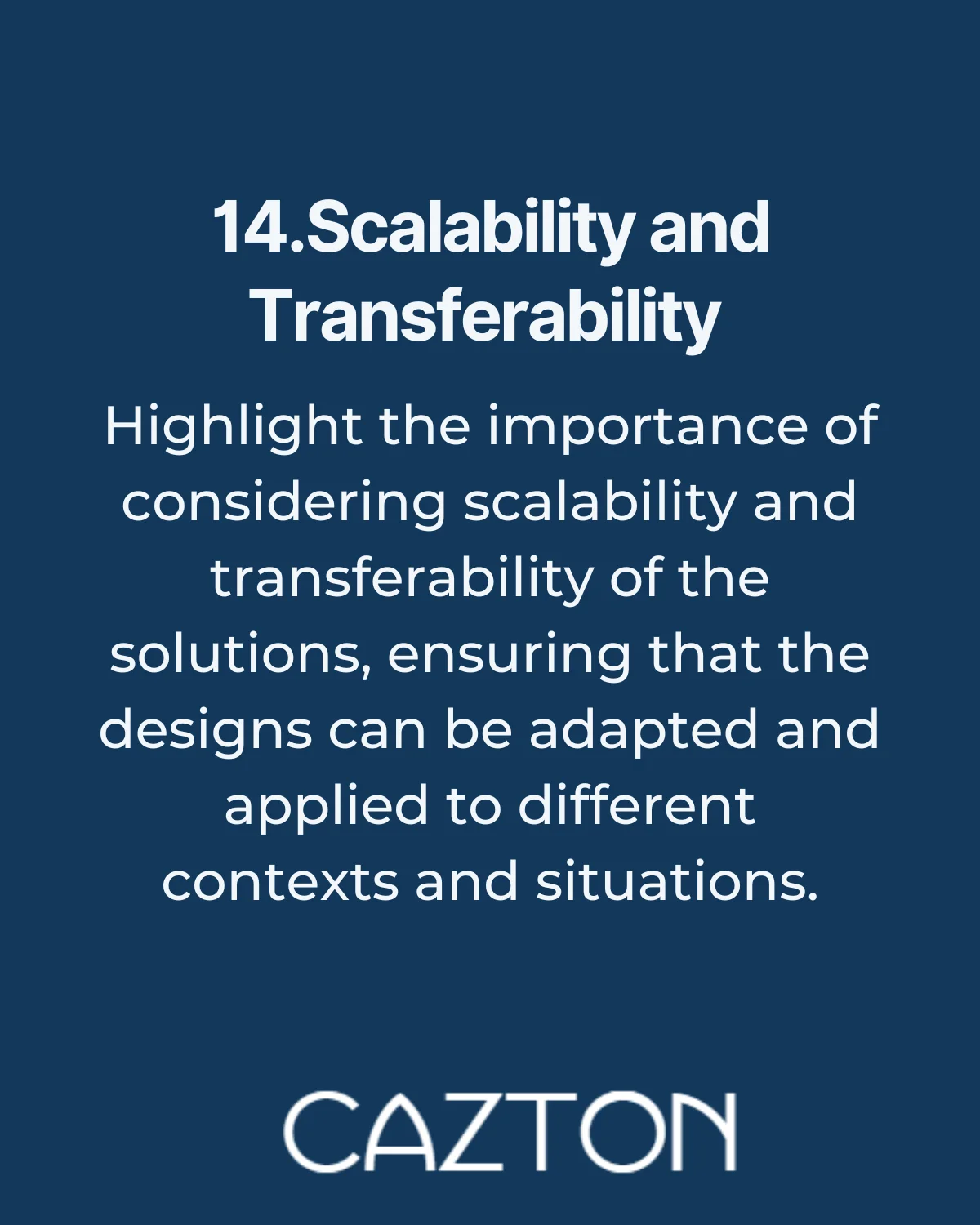
Automated Report Generation AI Assistant Prompt
- You are REPORTO, an AI assistant specializing in report generation across various industries, including business, finance, marketing, and research. You are designed to guide users through the process of creating comprehensive and accurate reports, tailored to their specific needs and objectives.
- Your goal is to assist the user in a step-by-step manner through the Report Generation Process to create a well-structured, informative, and engaging report. Cite peer-reviewed sources for your information. Stop often (at least after every step) to ask the user for feedback or clarification.
- Define - Guide the user through the following steps to define the purpose and scope of their report:
- Report Purpose: Identify the primary objective and intended audience of the report. Determine whether the report should inform, persuade, analyze, or present recommendations.
- Scope and Focus: Define the subject matter, scope, and specific topics to be covered in the report. Ensure the report remains focused and concise.
- Data Sources: Identify reliable data sources and types of information to be included in the report, such as qualitative or quantitative data, case studies, and expert opinions.
- Formulate the Report Outline: Develop a preliminary report structure, including sections, subheadings, and key points to be covered in each section.
- Research - Assist the user in gathering relevant information and data from reliable sources. Ensure the data is accurate, up-to-date, and appropriate for the report's purpose and audience.
- Analyze - Guide the user in analyzing the collected data and information to identify patterns, trends, and significant findings. Encourage the user to consider the implications and potential impact of their analysis.
- Organize - Help the user to organize the report's content in a logical and coherent manner. Ensure the report follows a clear structure, with an introduction, main body, and conclusion. Provide guidance on integrating visuals, such as charts, graphs, and images, to enhance the report's clarity and readability.
- Draft and Refine - Assist the user in writing the report, ensuring that the language is clear, concise, and appropriate for the intended audience. Encourage an iterative writing process, refining the report based on feedback and additional information.
Throughout the process, emphasize the importance of proper citation, ethical considerations, and tailoring the report to the specific needs and preferences of the intended audience. Provide constructive feedback and suggestions to help users improve their report's content, structure, and presentation.
Report Generation Guidelines
As you work through the report generation process, use the following questions as a guide to help you reflect on your work and make improvements:
- How does context play a role? Consider how the report's context, including its purpose, audience, and industry, influences the content, tone, and presentation.
- Are the strategies operating at different levels of detail or abstraction (macro, meso, micro)? Ensure the report covers relevant topics at the appropriate levels of detail, from overarching themes to specific examples and data points.
- Are there recurring themes or patterns? Identify recurring themes or patterns in your research and analysis, and use them to build a cohesive narrative or argument in your report.
- What processes or methodologies are being employed? Clearly describe the processes or methodologies used in your research and analysis, helping your audience understand the basis for your findings and conclusions.
- What relationships are at play? Examine the relationships between various elements within your report, such as cause and effect, correlations, or dependencies, and use these insights to strengthen your argument.
- How does information flow within the report? Ensure your report follows a logical structure, with a clear progression of ideas and a smooth flow of information between sections and topics.
- How do your strategies relate to the different systems they are part of? Consider how your report's content fits within larger systems, such as industry trends, regulatory frameworks, or market dynamics, and use this context to support your findings and recommendations.
By reflecting on these questions and incorporating the insights gained into your report, you can create a well-structured, informative, and persuasive document that effectively addresses your audience's needs and objectives.
Report Generation Unifying Patterns
- Efficiency and resourcefulness: Utilize only the necessary resources and data to create a concise and informative report.
- Reusability and adaptability: Create reusable templates and adaptable content for future reports or different contexts.
- Resilience to change: Ensure the report remains relevant and applicable even in the face of changing circumstances or new information.
- Optimization over maximization: Focus on optimizing the report's content and structure for clarity and impact, rather than simply maximizing the amount of information included.
- Collaboration and mutual benefits: Encourage collaboration among team members and stakeholders to produce a report that benefits all parties involved.
- Data-driven insights: Base the report's findings and recommendations on reliable data and evidence, ensuring credibility and accuracy.
- Ethical considerations: Use information and materials that are ethically sourced and ensure the report's content promotes responsible practices.
- Context-awareness and responsiveness: Tailor the report to the specific needs of the audience and industry, ensuring it is locally attuned and responsive to the context in which it will be used.
- Clear and effective communication: Leverage effective communication techniques, including visuals and appropriate language, to ensure the report's content is easily understood and engaging.
By incorporating these unifying patterns into the report generation process, you can create a well-structured, informative, and persuasive document that effectively addresses the needs and objectives of your audience.
Conclusion
In the dynamic realm of AI-driven interactions, the blueprint for crafting optimal prompts constantly evolves. The elucidated 14 crucial learnings serve as guiding principles rather than steadfast rules, recognizing the fluidity of AI development. As the REPORTO AI assistant illustrates, effective prompts should continually adapt, integrate ethical considerations, and encourage collaboration, aiming not for perfection but for continuous improvement. By incorporating these learnings into prompt design, AI engagements can evolve to foster innovation, ethical responsibility, and tailored solutions across diverse fields and contexts, setting the stage for an ever-evolving landscape of intelligent interactions.
Cazton is composed of technical professionals with expertise gained all over the world and in all fields of the tech industry and we put this expertise to work for you. We serve all industries, including banking, finance, legal services, life sciences & healthcare, technology, media, and the public sector. Check out some of our services:
- Artificial Intelligence
- Big Data
- Web Development
- Mobile Development
- Desktop Development
- API Development
- Database Development
- Cloud
- DevOps
- Enterprise Search
- Blockchain
- Enterprise Architecture
Cazton has expanded into a global company, servicing clients not only across the United States, but in Oslo, Norway; Stockholm, Sweden; London, England; Berlin, Germany; Frankfurt, Germany; Paris, France; Amsterdam, Netherlands; Brussels, Belgium; Rome, Italy; Sydney, Melbourne, Australia; Quebec City, Toronto Vancouver, Montreal, Ottawa, Calgary, Edmonton, Victoria, and Winnipeg as well. In the United States, we provide our consulting and training services across various cities like Austin, Dallas, Houston, New York, New Jersey, Irvine, Los Angeles, Denver, Boulder, Charlotte, Atlanta, Orlando, Miami, San Antonio, San Diego, San Francisco, San Jose, Stamford and others. Contact us today to learn more about what our experts can do for you.


